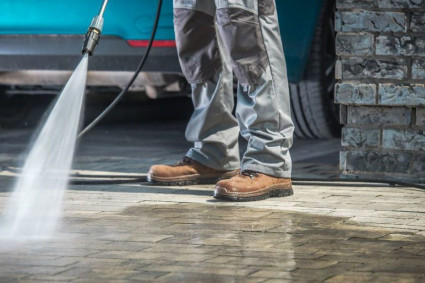Have you been sneezing a lot lately? Or maybe your eyes itch, your nose is always stuffy, and you're just not really doing so well when you're at home. You might be blaming it on dust or pollen, but check this out that most people are going to miss—mold in the basement.
Yes, that dusty, out-of-the-way spot in back of your home might be causing a whole lot more harm than you know. Mold can persist on walls, grow without your even realizing it, and wreak havoc on your health—especially if you have allergies.
In this article today, we're going to cover how mold affects your health, cleaning mold from basement walls, and why removing mold from basement walls is absolutely essential.
What is Mold and Why is it a Problem?
Mold is a fungus that develops in damp, dark places. It multiplies by releasing small spores into the air. These spores are very light and float around, so much so that they end up in your nose, eyes, or lungs when you inhale.
Some individuals may experience allergy symptoms as a result of mold spores, including:
- Sneezing
- Runny or congested nose
- Watery or burning eyes
- Wheezing or coughing
- Skin rashes
If you have asthma or other breathing problems, mold can exacerbate them. And the longer you are exposed to it, the worse it gets.
Why Basement Walls Are a Mold Hotspot
Basements are a favorite breeding ground for mold. Here's why:
- They're damp – Water could seep through the walls, or you could have leaks you're not aware of.
- They're cold and dark – Mold loves these environments.
- There's little air – Poor ventilation causes the moisture to linger.
- Walls can retain moisture – Especially if they're drywall or wood.
So if your basement has a musty smell, or if the walls are stained, cracked, or moldy, it's time to take a closer inspection.
How Mold Spreads Through Your Home
You might think, "The mold's just in the basement, so it's okay, right?" Not quite.
Mold spores don’t stay put. They float through the air and can spread throughout your entire home. That means even if you’re spending time upstairs, those tiny spores might still be affecting your health.
Over time, mold can make allergies worse and lead to long-term breathing problems. That’s why cleaning mold from basement walls is so important—not just for looks, but for your health.
Indications That You Have Mold on Basement Walls
Mold occasionally is easy to see. Other times, it's masked by paint or in the corners. Some of the signs to watch for include:
- Musty or earthy odor
- Wall stains or spots (brown, white, black, green)
- Peeling paint or wallpaper
- Wall wet or discolored spots
- Increased sneezing or allergy issues when you're inside
If you've noticed any of these signs, you should get your basement checked.
How to Clean Mold from Basement Walls
If you do have mold, don't panic. You can remove it safely if it's not too extensive. Here's a simple step-by-step guide:
1. Protect Yourself
Put on a mask (like an N95), gloves, and safety glasses to keep mold spores out of your eyes and lungs.
2. Open Up the Space
If your basement has windows, open them. Blow air through it with a fan. You don't want the spores hanging around.
3. Use the Right Cleaner
For minor mold, water and a little bit of dish soap will do. For tenacious mold, hydrogen peroxide or white vinegar work better. Avoid bleach on porous surfaces—it can't kill everything.
4. Scrub Well
Use a scrub brush on the moldy areas. Do this slowly and carefully.
5. Dry the Area
Mold thrives on moisture, so drying is important. Dry with fans or a dehumidifier to make sure everything is absolutely dry.
6. Prevent Future Mold
Once you have removed mold from basement walls, you are able to paint the surface with mold-resistant paint. Caulk any leaks and think about installing a dehumidifier to keep the air dry.
Long-Term How to Prevent Mold
A few things you can do to keep mold from coming back include:
- Fix cracks and leaks in basement walls
- Dry air with a dehumidifier
- Get air circulating through your basement—even a small vent or fan helps
- Avoid storing wet items in the basement
- Paint with mold-resistant paint when you paint walls
These small steps can pile up to create a big difference in the long term.
When to Call a Pro
When the mold is widespread (more than 10 square feet), or when it keeps coming back after your best efforts at cleaning, it's time to consider calling in the professionals to work for a professional mold cleanup firm.
They are equipped with gear to find hidden mold and are able to remove it safely and efficiently.
Final Thoughts
We all desire that our homes are a healthy, safe haven. But mold—specifically, hidden mold on basement walls—can silently harm your health without even knowing it.
By cleaning mold off of basement walls, you're not simply tidying up. You're protecting yourself and your family from allergies and breathing problems, improving your air quality, and creating your home a healthier haven in which to live.
So don't ignore that musty odor or strange stains on the wall. A little tidying now can mean a whole lot of warmth later.




